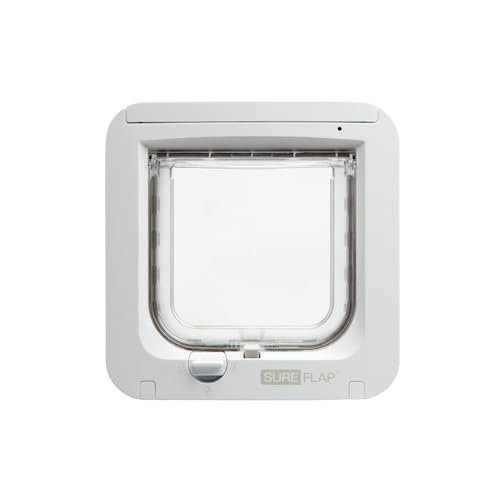Moving is often cited as one of life’s most stressful events for humans, a whirlwind of packing, logistics, and upheaval that can leave anyone feeling frazzled. But consider this: if moving is stressful for you, imagine how your feline companion perceives it. While you're caught up in coordinating moving trucks and sorting through boxes, your cat is likely experiencing a very different kind of stress, a deep-seated anxiety rooted in their very nature. They are finely tuned to their environment, deeply attached to their territory, and intensely sensitive to any disruptions of their carefully established routines. For them, the familiar comfort of their home is suddenly dismantled, replaced by chaos, strange noises, unfamiliar smells, and the unsettling feeling of their safe space dissolving around them.
Why is moving particularly stressful for cats? It stems from their inherent territoriality. A cat’s home isn't just a dwelling; it's their carefully marked and managed domain, a territory they understand and control. Their sense of security is inextricably linked to this familiar space. Cats are creatures of habit, finding comfort and stability in routine. Moves are the antithesis of routine – everything changes at once. The predictable rhythm of their day is disrupted, familiar sights and sounds vanish, and the very essence of what constitutes "home" is suddenly in flux. This abrupt shift can trigger profound anxiety, manifesting in a range of stress behaviors from hiding and withdrawal to vocalization and even changes in appetite or litter box habits.
It's not enough to simply pack up your cat along with the furniture and hope for the best. Proactive preparation is not just a kindness; it’s absolutely essential for minimizing stress, ensuring your cat's safety during the often chaotic moving day, and facilitating a smoother, more comfortable transition to their new home. With thoughtful planning and a few key strategies implemented both before, during, and after the move, you can significantly reduce your cat’s anxiety, make moving day manageable for everyone, and pave the way for a happy and well-adjusted feline in your new surroundings.
This article serves as your comprehensive guide, offering a step-by-step roadmap to prepare your beloved cat for every phase of the moving process, from the initial pre-packing stage right through to settling into their new environment. We will explore the crucial steps to take in advance of moving day, how to ensure their safety and comfort during the move itself, and how to help them adapt and thrive in their new home.
Long before the moving truck arrives and the boxes start piling up, the pre-move phase is your opportunity to lay the groundwork for a smoother, less stressful transition for your cat. One of the first and most important steps is scheduling a veterinary check-up. This isn’t just routine; it’s a vital health precaution before subjecting your cat to the stress of a move. A pre-move health check ensures your cat is in good health and fit to handle the potentially unsettling experience. Your vet can rule out any underlying health issues that might be exacerbated by stress and ensure your cat is starting this transition from a place of optimal well-being.
While at the vet, confirm that your cat’s vaccinations are up-to-date. This is important for their overall health, especially as they will be exposed to a new environment and potentially new animals in your new location. Equally crucial is to verify that your cat’s microchip information is current. If your contact details will be changing with the move, update the microchip registry immediately. This is absolutely vital should your cat, in a moment of stress or disorientation during or after the move, accidentally get lost. A microchip is their best ticket home. Request copies of your cat's complete medical records from your vet. You’ll need these to transfer to a new veterinarian in your new location, if applicable. Don't hesitate to ask your current vet for recommendations for reputable veterinarians in your new area. Local vet referrals can be invaluable in finding trusted care in an unfamiliar place.
For cats who are known to be exceptionally anxious or easily stressed, discuss the possibility of vet-prescribed sedation for moving day with your veterinarian. This is not a first-line solution and should only be considered for cats who truly struggle with stress and under strict veterinary guidance. If deemed appropriate, your vet can prescribe safe and effective sedatives to help keep your cat calm during the most chaotic parts of moving day and the actual transport itself.
Well before the boxes start appearing, begin the crucial process of acclimating your cat to their carrier. For many cats, the carrier is associated with vet visits or other unpleasant experiences, becoming a symbol of fear and confinement. Your goal is to reframe the carrier as a safe space, not a source of punishment or anxiety. Start this process weeks, even months, in advance of your move. Make the carrier a comfortable and inviting den. Line it with soft, familiar bedding, a favorite blanket that carries their scent, or a beloved toy. Create positive associations with the carrier. Feed your cat treats inside the carrier, toss toys inside for them to play with, and encourage them to nap in it by placing it in a comfortable, accessible location and leaving the door open. Let them explore it and enter it on their own terms, without any pressure or force. Once your cat is comfortable spending time inside the carrier, you can gradually introduce gentle movement. Start with very short, gentle movements of the carrier around the house, perhaps just lifting it slightly and setting it back down, rewarding calm behavior with praise and treats. Gradually increase the duration and extent of the movement, always keeping it gentle and reassuring. The aim is to desensitize them to being in the carrier and even associate it with positive experiences.
Scent is paramount to cats, their olfactory world deeply intertwined with security and comfort. Leverage this by creating "scent soakers" – items that carry familiar smells to help reduce stress in the new, unfamiliar environment. Explain to your cat that these specific scents will be going to the new house, and they will come too. Use items like small, soft blankets, small towels, or even old t-shirts that your cat frequently sleeps on or rubs against. These items will absorb their scent and act as olfactory anchors in the new home. Start collecting these scent soakers in the weeks leading up to the move, allowing them ample time to become thoroughly imbued with your cat's familiar scent. Keep these scent-soaked items separate from other packing materials, ready to be deployed strategically in the new home.
Crucially, plan a "safe room" at your new home before moving day chaos erupts. Designate a specific room in your new house as your cat's sanctuary, their initial refuge in the unfamiliar surroundings. Ideally, choose a quiet room that can be easily closed off and undisturbed, such as a spare bedroom or a den. If possible, set up this safe room before the main moving commotion begins at the new house. Even before furniture or boxes enter other rooms, prioritize establishing the safe room. Equip the safe room with all the essentials your cat will need: food and water bowls, a litter box, a scratching post, the scent-soaked bedding and blankets you prepared, and a few of their favorite toys. Consider using a Feliway pheromone diffuser in the safe room from the outset to create a calming pheromone-enriched environment. Embrace a "cat first, boxes later" mentality for this space. Prioritize setting up this sanctuary for your cat before you begin unpacking boxes in this room, ensuring their comfort and security are the immediate priority.
Moving day itself is often the most stressful part of the entire process for your cat. The key to minimizing their anxiety and ensuring their safety is to secure your cat safely and early, before the moving day chaos truly begins. First thing in the morning, before movers arrive or packing activity ramps up, gently and calmly get your cat into their carrier in a quiet, undisturbed room. Ideally, this room should not be the safe room you've prepared at the new house. You want to keep that safe haven pristine and undisturbed until you arrive at your destination. Choose a room that will be relatively undisturbed by the moving process, away from main thoroughfares and doors that will be frequently opening and closing. A spare bedroom, a bathroom, or even a large walk-in closet (with adequate ventilation, of course!) can serve as a temporary holding area.
Once your cat is securely in their carrier within this quiet room, prominently label both the room door and the carrier itself with clear and unambiguous "DO NOT OPEN - CAT INSIDE" signs. This is absolutely vital to prevent accidental escapes during the flurry of moving day activity. Maximize comfort within the carrier on moving day. Ensure it contains the familiar scent-soaked bedding and a favorite toy to provide a sense of security. Offer a small amount of fresh water in a spill-proof dish within the carrier. Food is less critical for a single day move, but a few familiar, high-value treats can offer comfort and reassurance. Partially cover the carrier with a light blanket or towel. This can reduce visual stimuli, creating a darker, den-like environment that feels more secure, but make sure ventilation is not compromised. Place the carrier in a stable, safe location within the quiet room, ensuring it is on a level surface where it won't be bumped, tipped over, or subjected to vibrations during the moving process.
Throughout moving day, the overriding principle is separation. Keep your cat physically separated from the moving activity itself. The goal is to minimize their exposure to the noise, commotion, open doors, unfamiliar people (movers), and general chaos of moving day. If possible, request that movers be mindful and keep noise levels to a minimum in the immediate vicinity of the room where your cat is secured. Maintain comfortable temperature control in the room where your cat is located. Ensure it is neither too hot nor too cold, avoiding extremes that could add to their stress.
When it’s time to transport your cat to your new home, secure the carrier in your car. The safest place is often on the floor behind the front seat, where it is less likely to shift during braking or turns. Ensure the carrier is stable and won't slide around during the drive. Take the most direct route possible to your new home, minimizing travel time and potential stressors. Avoid unnecessary stops, detours, or errands. Maintain a comfortable temperature inside the car for your cat’s well-being. During the drive, speak to your cat in a calm and reassuring voice, if you know this is comforting to them. Some cats find a soothing voice reassuring, while others may prefer quiet. Gauge your cat's individual reaction and adjust accordingly.
Upon arrival at your new home, make the safe room your absolute first destination. Before unloading furniture, unpacking boxes, or addressing any other moving-related tasks, take your cat, still securely in their carrier, directly to the pre-prepared safe room. Once inside the safe room, close the door securely behind you, ensuring it is firmly shut before you even think about opening the carrier door. Inside the safe room, open the carrier door and then step back and allow your cat to emerge from the carrier in their own time. Do not attempt to force them out, pull them, or rush them in any way. Let them dictate the pace of their exploration. Allow your cat to explore the safe room and familiarize themselves with its contents entirely at their own pace, without any pressure or interruption from you or anyone else. Ensure that food, water, and the litter box are immediately accessible and clearly visible within the safe room.
Resist the understandable urge to immediately let your cat explore the entire new house. Emphasize the importance of continued gradual introduction, even in the new environment. The safe room is now their new base camp, their secure anchor in this unfamiliar territory. Allow your cat to remain confined to the safe room for at least the first day, and potentially for several days or even a week, depending on their individual personality, stress levels, and how quickly they appear to be adjusting. During this safe room confinement, visit your cat regularly, spending quiet time with them in their sanctuary. Speak to them softly and reassuringly, offer gentle petting if they are receptive and relaxed, and simply be present and calmly reassuring.
Once your cat seems calmer, is eating, drinking, and using the litter box consistently within the safe room, you can begin the process of gradually introducing them to the rest of your new home. Start with very controlled explorations, initially just opening the safe room door and allowing them access to one additional room, always under your direct supervision. Be present during these initial explorations, offering reassurance, gentle guidance, and ensuring they don't become overwhelmed or lost in the larger space. Over the following days and weeks, slowly and incrementally expand the area they are allowed to explore, room by room, always at their own pace and comfort level. Continuously observe your cat for any signs of stress or anxiety during these explorations. Watch for indicators like excessive hiding, increased vocalization, panting, loss of appetite, or inappropriate urination. If you notice these stress signals, it’s a clear sign you are progressing too quickly. Retreat back to safe room confinement, slow down the introduction pace, and allow them more time to adjust to each new stage.
Throughout the new home, scatter the familiar scent-soaked items you prepared, placing them in various locations in addition to their safe room. These olfactory landmarks will help create a sense of familiarity and security throughout the unfamiliar space. As quickly as possible, re-establish your cat's familiar daily routines in the new home. Maintain consistent feeding times, playtime schedules, cuddle sessions, and any other routines they were accustomed to in your old home. Routine provides crucial stability and comfort during a time of upheaval. Continue or initiate the use of pheromone diffusers, such as Feliway, in key areas of the new home, particularly in common areas and sleeping spaces, to further promote calm and reduce overall stress in the new environment.
Even with meticulous planning and execution, some cats may still exhibit signs of stress after a move. Recognizing these signs is essential to address them proactively. Common indicators of feline stress in a new home include excessive hiding, loss of appetite or reduced eating, litter box issues (urinating outside the box, constipation), increased vocalization (excessive meowing or crying), over-grooming or under-grooming, restlessness or agitation, and withdrawal from social interaction. Patience remains absolutely key during this adjustment period. Remind yourself and your family that settling into a new home takes time for cats, just as it does for humans. Avoid rushing your cat, pressuring them to explore or interact before they are ready. Continue to utilize the safe room as their secure retreat. Encourage them to use it as a haven whenever they feel overwhelmed, anxious, or in need of solitude. Provide extra gentle attention, offer quiet reassurance, engage in gentle playtime if they are receptive, and simply be present and consistently reassuring.
If stress signs are severe, persistent, or seem to be worsening over time, don't hesitate to consult your veterinarian again. They can rule out any underlying medical conditions that might be contributing to the stress response and may recommend anti-anxiety aids, such as supplements or prescription medications, or offer further tailored behavioral strategies to help your cat adjust. Discuss feline pheromone therapy options with your vet. They may recommend more concentrated pheromone sprays or, in more severe cases, short-term prescription anti-anxiety medication to help manage acute stress.
Moving with your cat requires extra forethought, careful planning, and a significant dose of patience. The key is to approach the process gradually, prioritize your cat's comfort and security at every step, and understand that their adjustment will take time. Remember to see the move from your cat's perspective – it's a major upheaval for them, a disruption of their world as they know it. By taking it slow, being patient, and consistently reassuring, you can minimize their stress, ensure their safety during the often-chaotic moving day, and help them transition smoothly to their new home. The peace of mind knowing you've done absolutely everything you can to make this transition as comfortable and stress-free as possible for your beloved feline companion is truly well worth the extra effort. Welcome home, kittie – to a new chapter filled with comfort, security, and love, all carefully orchestrated by you.







